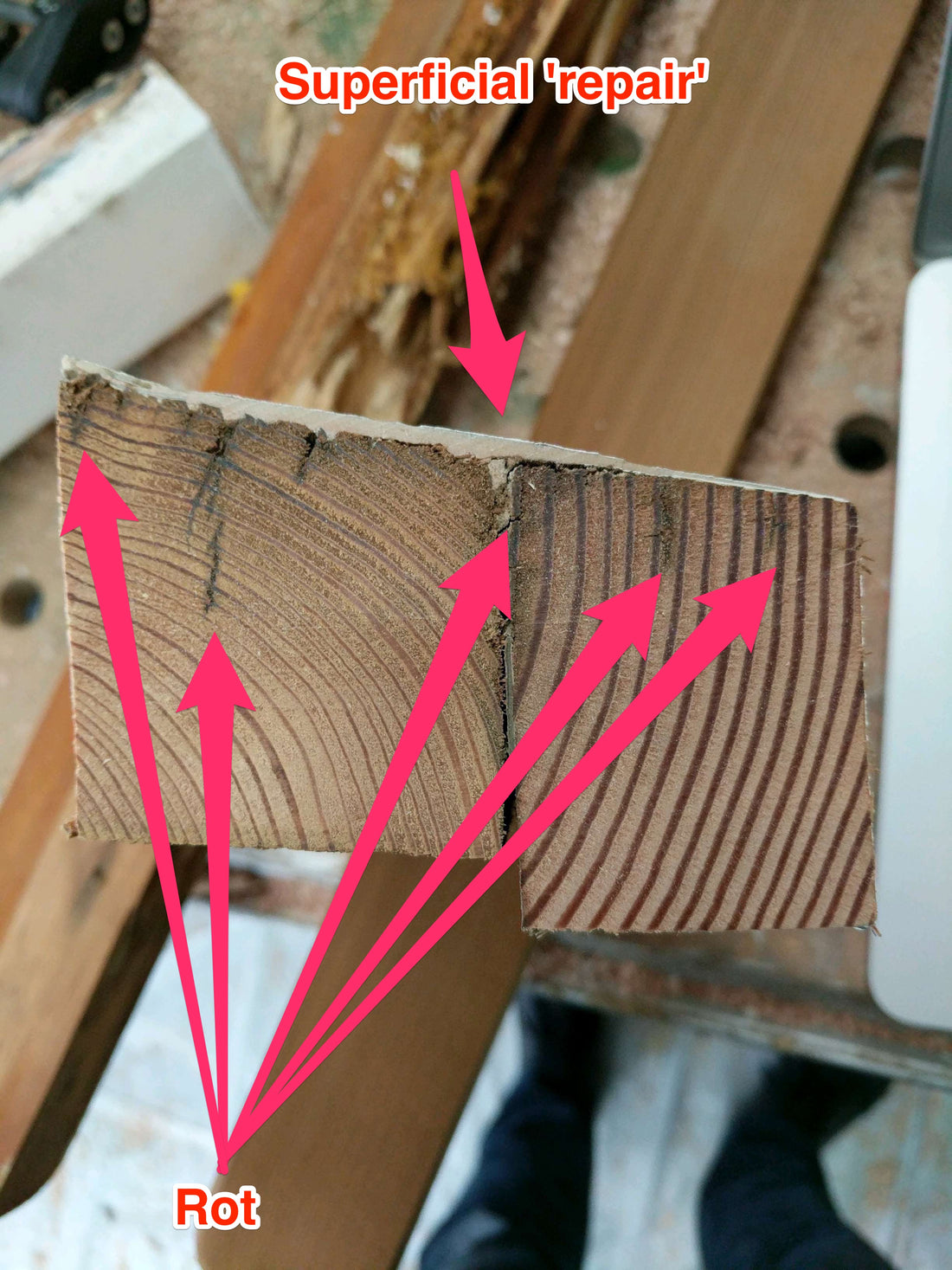Cutting rot out to the unaffected wood is the best way to deal with removing the fungus and stopping future rot. A good tool for cutting is a multitool. A multitool is very flexible and allows cuts to be made relatively simply and swiftly. Sometimes this is not entirely possible so a fungicide or Epoxy Hardner should be used. This system works by soaking into the timber grain and crystallising, making the timber resistant to movement and further rot. It also works to isolate and capture any small portions of rot that may have been missed when you cut out the rest of the rot.
The tools that are handy to repair old wooden windows include a hammer, chisels, drill, table saw, drop saw, multitool and maybe a router. When fixing joints and making small repairs, e.g. checking in wood or splicing timber pieces, to use Sellaseal's special flexible DT Epoxy. After glue and epoxy dries it’s time to shape corners with a chisel, tidy decorative mouldings, and to get clean and smooth joints. After sanding finally paint all surfaces with a solvent based primer sealer to protect the timber and to prevent any rot penetrating in again. Make sure top a good primer/sealer is used and that top coats are applied as soon as possible to protect the new repair.
A word of warning. When you work on old wooden windows make sure you consider the likelihood that lead paint is present. It is very important that work health and safety precautions are followed to stop the ingestion and transfer of old paint dust and chips. This guide may assist you in staying safe when working around lead based paints

